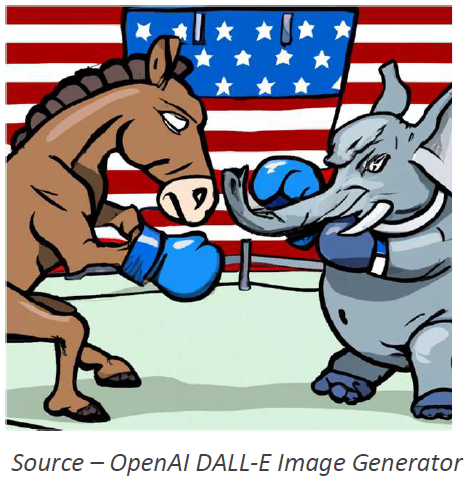In late January we published a piece titled “Knife Fight” about the potential storm brewing over our country’s impending debt ceiling. In addition to providing some historical information on the topic, which we are not going to reproduce here, that note concluded, in part, with the following:

The issue has certainly gained in narrative strength since that note was written, as heated debates and discussions are taking place constantly between President Biden and his team of negotiators and House Speaker Kevin McCarthy’s contingent. In fact, along with the banking crisis in March, the debt ceiling debacle is one of the few issues that has been able to displace the Federal Reserve’s interest rate policy in financial media headlines this year.

However, even as we approach the beginning of June, when US Treasury Secretary Janet Yellen indicates that the country will run out of money (the so-called “Xdate”), it is difficult to ascertain whether this potential storm is going to blow over entirely or strengthen into a hurricane. Even the X-date itself is far from an exact science, as measuring the timing and size of fund flows for something as complex as the US government is a difficult task. As you can see at right, the range of X-date estimates from Wall Street firms ranges from early June at the earliest to early August at the latest.
What is known is that the government is running very low on cash to pay bills. In fact, over two-thirds of the accounting gimmicks referred to as “extraordinary measures” have already been used by the US Treasury.1Source: https://www.bloomberg.com/news/features/2023-05-23/debt-ceiling-deadline-tracker-markets-jittery-despite-progress

Also complicating matters, we are getting conflicting signs from markets regarding the seriousness of the issue. For example, equity markets have been relatively resilient in the face of a banking crisis, the threat of an economic slowdown (if not recession), and now this debate. As you can see at right, most equity indexes are positive so far year-to date, with large US technology stocks (as represented by the Nasdaq Composite index) up over 20 percent. If equity market returns were the only data point to consider, we would assume that the risk of the debt ceiling debate snowballing into a bigger issue that rattles global markets to be quite low.
However, we are getting a different story when we look at US Treasury Bill yields. For example, see the image below illustrating the yields for bills maturing in May (white and green lines), which is before the anticipated Xdate, and maturities that occur in June and later (after the X-date, when a default could threaten the timing of the repayment). Clearly, market participants are demanding a far greater yield for bills maturing around the Xdate because they believe there is at least a chance that the US government may not be able to make payments on time (to government workers, contractors, and Social Security recipients, etc.) or experiences a technical default by not paying bond holders when payments are due.

In addition, the messaging about the negotiation process differs based on the day and the messenger. President Biden has stated that “default is off the table,” and Speaker McCarthy has told reporters “We had very good discussions,” after meetings. Unfortunately, the two sides still do not agree on spending and White House spokesperson Karine Jean-Pierre described the discussions as “incredibly tough”, so it is difficult to ascertain just how close the two sides are to a deal that both parties can live with.2Source: https://www.reuters.com/markets/us/biden-mccarthy-aides-hunt-bipartisan-debt-ceiling-deal-2023-05-23/
Summary:
We remain cautiously optimistic that this debate will get resolved without the US government defaulting on its obligations. It took longer than it should have, but the two sides are finally at the negotiating table trying to work out a compromise. Whether a last-minute deal is reached, or the decision is made to temporarily raise the ceiling while negotiations continue, our base case is that the two sides work to avoid what would be a self-inflicted wound to our economy.
However, the situation is fluid and there may be parts of each party that are simply unwilling to negotiate with the 2024 Presidential race on the horizon. As a result, the potential for volatility in both equity and fixed income markets over the next month certainly exists and it is still conceivable that an impasse pushes the US economy into a recession (see the Knife Fight note for more information on the 2011 market sell-off that occurred during that debt ceiling debate).

Consequently, we advise clients relying on portfolios for supplemental income or those with large upcoming distributions to maintain sufficient liquidity to ride out several months of choppy markets should they occur. Otherwise, we believe “this too shall pass” and clients will be best served by sticking with long-term financial plans rather than attempting to time markets or hedge against political and geopolitical risks that are difficult to handicap.
Lastly, to those already weary of the political brinkmanship at the heart of this debate we have some bad news – the 2024 Presidential election is still 18 months away. As always, please do not hesitate to reach out if you would like to schedule a time to discuss your specific situation.
References
- 1
- 2

